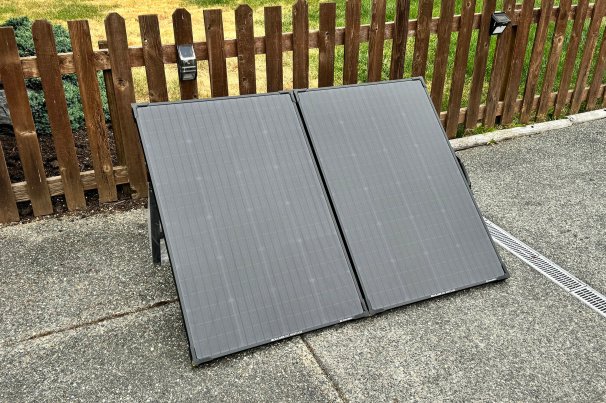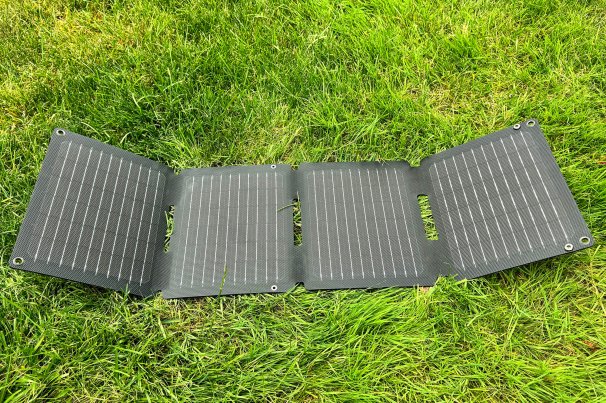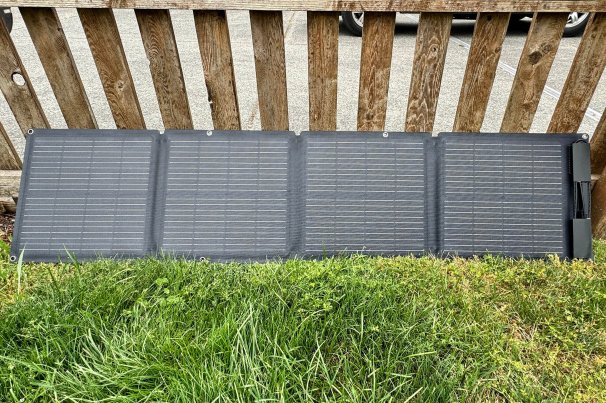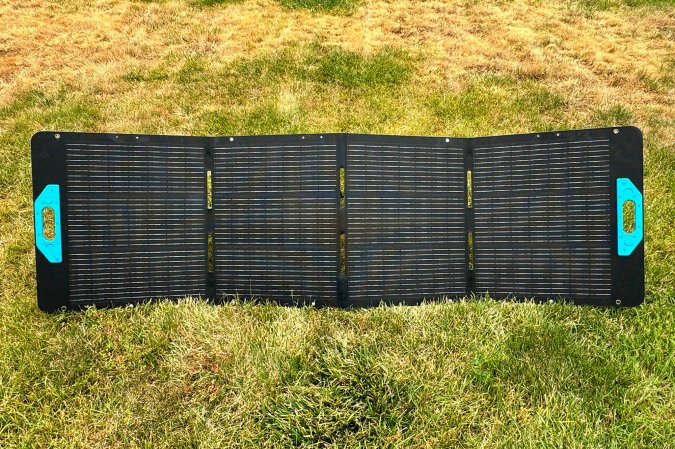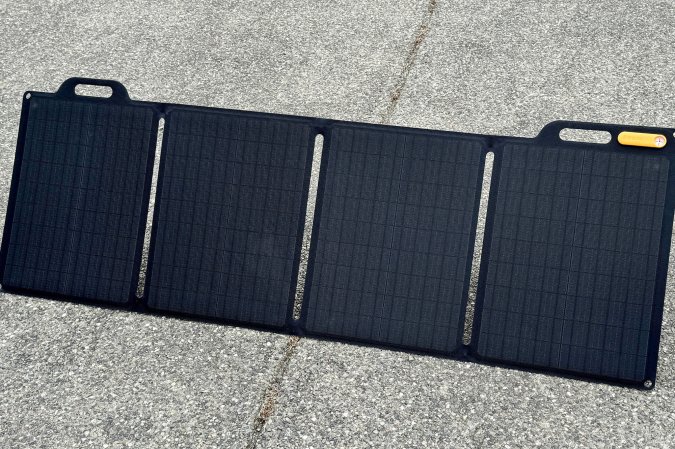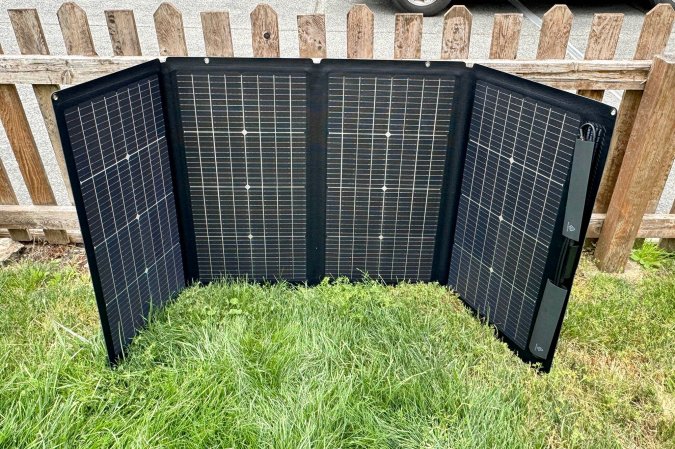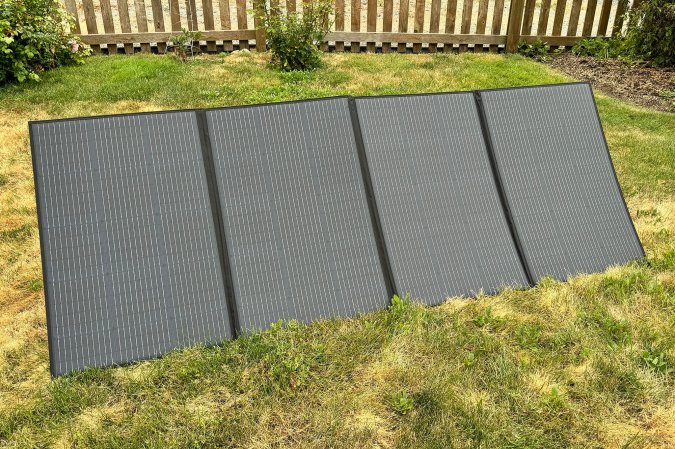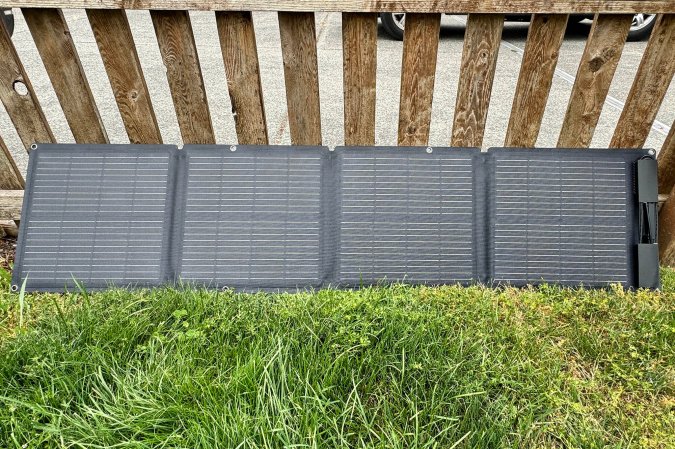We may earn revenue from the products available on this page and participate in affiliate programs. Learn more ›

Just a decade ago, consumer-grade portable solar panels weren’t effective or popular, but rapid improvements in panel design and solar generators have made them a must for campers, overlanders, RVs, or home backup power. There are now so many foldable solar panels and solar panel kits available that it can be difficult to know where to begin. To that end, we’re looking at the best portable solar panels for a variety of needs, from mini solar panels to charge up a few devices to panels large enough to support a trailer, off-grid system, or even—in a pinch—your home. From our best overall, the Goal Zero Boulder 200, to our value and splurge picks and everything in between, these are the best portable solar panels to suit a range of situations.
- Best overall: Goal Zero Boulder 200
- Best value: Anker SOLIX 531 200W Solar Panel
- Best eco-friendly: BioLite Solar Panel 100
- Best design: EcoFlow 220W Bifacial Solar Panel
- Best compact: Anker SOLIX PS30
- Best rated: Jackery 100W Solar Panel
- Best splurge: Bluetti PV350 Solar Panel
- Best budget: EcoFlow 110W Solar Panel
How we chose the best portable solar panels
To say that I’ve “tested” solar panels is a gross understatement. Over the past four years, I’ve put dozens of products from nearly as many brands through their paces, sometimes spending months at a time relying on solar panels to keep my solar generator charged and my laptop, camera, lights, minifridge, ebikes, and more going as I’ve road-tripped everywhere between Mexico City and Jasper, BC.
This extensive firsthand experience has been leveraged to review solar panels for top publications like Popular Science, Popular Mechanics, Thrillist, and more. My livelihood has literally depended on my ability to collect reliable power on the go, so you can take my word on it: Whether you aim to charge a small power bank or a much bigger portable power station, these are the best portable solar panels of 2024.
The best portable solar panels: Reviews & Recommendations
While we’ve named one panel “best overall,” that doesn’t necessarily mean that’s the solar battery charger that is right for your needs. Below, you’ll find what to know when buying solar panels to suit a wide range of circumstances and budgets.
Best overall: Goal Zero Boulder 200
Specs
- Watts: 200
- Weight: 46.3 lbs
- Efficiency: 21%
Pros
- The suitcase design is very portable
- Good wattage
- Super durable
Cons
- Heavy
The Boulder 200 from Goal Zero took our best overall spot for several reasons. First off, I love the flat suitcase design. It’s very easy to fit into an RV or converted van, then just as easy to deploy. While it is pretty heavy for a folding panel, a sturdy handle makes it easy to grip, and just carrying the thing you can feel that it’s a hardy product. And it certainly is durable. I tend to be pretty hard on my gear, and after many drops and bumps, mine is still going strong. The 200W capacity is ideal for most purposes, and I’ve found that it performs well in less-than-perfect sun conditions. It’s definitely heavy, but beyond that it’s an outstanding option for the outdoors or home backup power.
Best value: Anker SOLIX 531 200W Solar Panel
Specs
- Watts: 200
- Weight: 20.35 lbs
- Efficiency: 23%
Pros
- Great wattage for the price
- Angle stands for support
- Good solar conversion efficiency
Cons
- Somewhat heavy
The 531 panels from Anker SOLIX deliver outstanding value, as their 200W capacity is very good considering the price. The efficiency rate is above average, and the standing arm seats on 60-, 50-, and 40-degree angle markers not only help obtain optimal sunlight but also provide extra support in the wind. The panels are durably made and highly portable, and while they’re not exactly lightweight, they’re not overly cumbersome. They’re a perfect option for charging up a portable power station in a van conversion or RV and fitting into any cargo space with ease.
Best eco-friendly: BioLite Solar Panel 100
Specs
- Watts: 100
- Weight: 9.5 lbs
Pros
- Eco-conscious brand
- Quality panel all around
- Very lightweight
Cons
- Modest wattage
All solar panels have an inherently eco-friendly element, but BioLite, in particular, goes the extra eco-mile with its environmentally friendly practices, which has garnered the company 100 percent climate-neutral certification. The panels themselves are durably built, easy to use, incredibly lightweight, and about as portable as can be. The 100W wattage isn’t going to be enough for an RV, but for general camping or overlanding purposes, it’s more than adequate for charging devices. All in all, it’s a great solar panel from a brand with solid eco-cred.
Best design: EcoFlow 220W Bifacial Solar Panel
Specs
- Watts: 220
- Weight: 15.4 lbs
- Efficiency: 22%
Pros
- Bifacial design
- Solid wattage
- Lightweight
Cons
- Standing arm only so-so
While solar panel design doesn’t tend to vary all that dramatically, the EcoFlow 220 Bifacial stands out by having solar collection cells on both sides of the panel, resulting in the gathering of some 5-25 percent more sunlight due to its ability to pick up ambient light. While that might not sound like much, that extra juice does make a difference, and it’s especially helpful when you’re charging in subpar sun conditions. The panel is sturdily built and relatively lightweight. While it’s easy to deploy, I found the case, which doubles as a standing arm, to be a bit wobbly, with the end panels tending to droop a bit due to lack of support. But for gobbling up every last bit of available sunlight, it can’t be beat. More concerned with pure wattage than usable surface area? EcoFlow also has a 400W panel kit, though it costs almost twice as much.
Best compact: Anker SOLIX PS30
Specs
- Watts: 30
- Weight: 2.2 lbs
- Efficiency: 23%
Pros
- Very compact and lightweight
- Hangs from backpack
- Very durable
Cons
- Low wattage
Backpackers and hikers can’t go wrong with the PS30 from Anker SOLIX, which not only folds down to about the size of a book but is exceedingly lightweight and can be affixed to your backpack, allowing you to charge up on the march. It’s super tough and plenty capable of absorbing the impacts of the outdoors. While the efficiency is great, its wattage certainly isn’t enough for a power station, let alone an RV. Instead, it’s specifically intended for charging small power banks and devices, and to that end, it is perfect.
Best rated: Jackery 100W Solar Panel
Specs
- Watts: 100
- Weight: 7.1 lbs
- Efficiency: 23%
Pros
- Great all around
- Lightweight
- Very durable
Cons
- Modest wattage
Few names are so consistently at the head of the solar generators + accessories pack as Jackery, and its 100W panel is the perfect example of why. It’s the archetype of an all-around quality panel. It’s highly efficient, even if the 100W output means you’ll likely need more than one, but luckily the price is affordable. Design-wise, they’re just about flawless. They’re very lightweight and thin, making them effortless to move around and pack. They’re easy to use as can be and beyond durable. I truly don’t understand why mine haven’t broken because they have been through some punishing treatment. With all that in mind, it’s no surprise that they’re consistently rated among the best, if not as the best.
Best splurge: Bluetti PV350 Solar Panel
Specs
- Watts: 350
- Weight: 30.6 lbs
- Efficiency: 23.4%
Pros
- High wattage and efficiency
- Superior build quality
- Surprisingly lightweight
Cons
- Expensive
The Bluetti PV350 is an expensive solar panel that is worth every penny. I’ve never encountered another solar panel that feels luxurious—understandable as that’s not a very practical quality—but this one does. The rubber handle is sturdy and fits comfortably in hand, and for such a large panel, it’s surprisingly lightweight. Speaking of large, 350W of output in a single panel is just about as high as it gets when it comes to portable options, and the 23.4 percent efficiency is one of the best out there. It’s definitely a pricey panel, but if you can afford it, you will appreciate it.
Best budget: EcoFlow 110W Solar Panel
Specs
- Watts: 110
- Weight: 8.8 lbs
- Efficiency: 23%
Pros
- Snapping open/close design
- Very lightweight
- Good solar conversion efficiency
Cons
- Modest wattage
I was skeptical of the EcoFlow 110W solar panel’s most unique feature—the snap buttons that hold it closed or lock it in place—but it turned out to be my favorite aspect. These buttons make it incredibly quick and easy to secure everything in place. The panel is lightweight and compact enough to fit in a medium-sized backpack, and the 23 percent solar conversion rate is excellent. While a single 110W panel would be frustratingly low capacity for powering a trailer, it is a solid amount for charging a small power station or power bank, making this a great pick if you’re looking to use it for hiking or powering a few devices while camping.
What to consider when choosing portable solar panels
There are many factors to consider when deciding which portable solar panel is right for you—and new technology will always fuel innovation and introduce more. Below are the current factors we considered most important when writing this guide.
Wattage and efficiency
When choosing a solar panel, there is no factor more important than wattage. If it doesn’t produce enough for your needs, it’s going to end up being more frustrating than helpful. So, how many watts is a good portable solar panel? For an RV, you’re likely going to want 200W at a minimum, but more like 400W, which in good sun conditions should keep your batteries topped off. Overlanders or campers using a portable power station can get away with a more modest 100-200W. Backpackers or anyone just looking to charge up a power bank or small devices typically don’t need over 100W.
You also want a panel that is efficient at converting sunlight into electricity. While cheapo panels can drop to sub-20 percent, you should always look for 22 percent or up.
Portability
Portability is relative to your needs. A panel that is fine for an RV or large van conversion may be too much for a smaller rig, and depending on your vehicle storage, you may prefer flatter vs. wider or vice versa. Look for a model that folds down to the appropriate size for how you expect to transport it. Weight is also a consideration, though it’s mostly a factor in terms of your ability to move it around.
Durability
You need a panel that can withstand rigorous use. That means it’s built to withstand repeated opening and closing, sun, wind, at least some precipitation, and the inevitable, unpredictable bumps and strikes. While it isn’t easy to determine durability just by looking, certain brands have a reputation for quality and publish their product’s Ingress Protection ratings, for a start.
FAQs
It’s not uncommon to wonder, “Do portable solar panels need direct sunlight?” While a cloudless sky certainly helps, a few clouds or even a bit of overcast doesn’t mean that you can’t catch some rays. It will diminish the amount of sun you can collect, but you can still obtain a slow, steady charge by making sure your panels are appropriately positioned.
Avoid the shade, even sporadic shade from tree cover, and try to get the panels facing the sun as broadly as possible by using the standing arm to find the right angle. If you’re trying to get as much sun as possible, shift the panels every half hour or so to keep them sunward. If you don’t want to give them that much attention, place them facing due south if you’re in the Northern Hemisphere and due north if you’re in the Southern, which will provide the best coverage throughout the day.
The prices of our picks range from $79 for 30W to $849 for 350W. If you’re looking to push closer to a full 500 watts of power, expect to spend between $650 and $999.
Final thoughts on the best portable solar panels
- Best overall: Goal Zero Boulder 200
- Best value: Anker SOLIX 531 200W Solar Panel
- Best eco-friendly: BioLite Solar Panel 100
- Best design: EcoFlow 220W Bifacial Solar Panel
- Best compact: Anker SOLIX PS30
- Best rated: Jackery 100W Solar Panel
- Best splurge: Bluetti PV350 Solar Panel
- Best budget: EcoFlow 110W Solar Panel
As a camping enthusiast who works remotely, these panels have been a game changer, allowing me access to solar-powered batteries to charge my laptop, top off my camera, and give me power for phones and other essential devices no matter where I go. The technology has improved rapidly, transforming the way we can experience the outdoors. The panels above represent the best options available to consumers—so far. The design is getting smarter and more efficient all the time, so check back regularly as we update the best options for every type of user.
